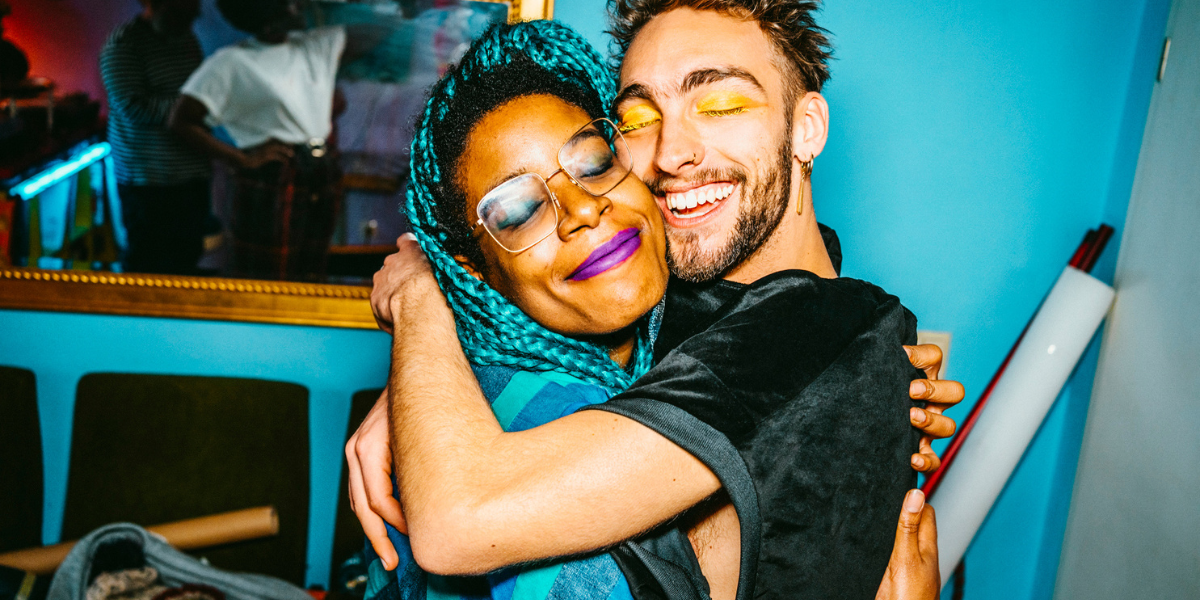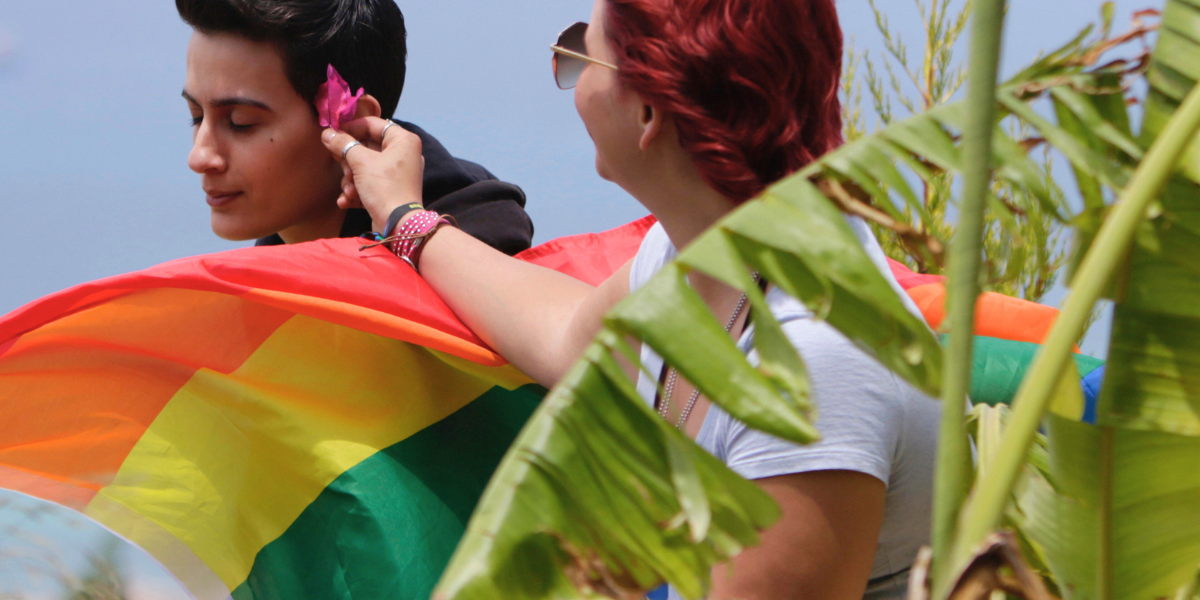feature image photo by Maskot via Getty Images
Ace week, previously called Asexuality Awareness Week, is here — spanning October 22 to 28. Us aces have a lot to celebrate these days, including increasing representation on TV (my favorite of which has been the aroace character, Isaac, in the YA show Heartstopper), a growing set of ace voices in literature (see the Aroace Database for a living list), and kickass public figures such as British aroace activist Yasmin Benoit. But even while it is a great time to be ace, anti-ace rhetoric continues to circulate in queer communities.
Most commonly, the anti-ace rhetoric goes something like this: Aces can be queer but only if they are also lesbian, bisexual, gay, transgender. Because otherwise, how will they ever know what it is like to be discriminated against (spoiler: aces are discriminated against constantly). Or another common one is that while some aces might be queer, aces and asexuality are baseline a straight orientation. These and other perspectives are part of a misreading and misunderstanding of asexuality that, frankly, leaves aces feeling exhausted and is also sad for its elocutionists who are clearly not appreciating the glorious queerness of asexuality in their gatekeeping and exclusionary formulations of “who counts as queer.” As Yasmin Benoit has indicated, reflecting on the racist and acephobic messages she received after posting a Tweet about her involvement in pride 2023, there is “a double standard, even within the LGBTQ+ community, that people are happy to accept certain groups talking about visibility, but not others.” Sherronda J. Brown in her book Refusing Compulsory Sexuality: A Black Asexual Lens on Our Sex-Obsessed Culture, names queer folks who espouse such anti-ace rhetoric “acephobic exclusionists.” Dear allo-queers: You are not more queer if you insist on misreading asexuality as an absence of queerness.
There are so many ways in which asexuality is a fundamentally queer orientation and one that is increasingly identified with by sexual minority young adults (according to a study, around 1.7 percent of sexual minority youth in the US are asexual). Importantly, asexual folks are not only a queer minority in their own right, but they also significantly overlap with other queer minorities, with many aces identifying as bi, gay, lesbian, pansexual, as well as transgender, genderqueer, and nonbinary. The community-run Ace Community Survey from 2020 found that 22.5% of respondents are nonbinary, 12.3% agender, 15% unquestioning, and 15.2% trans (trans also co-occurs with other gender identities in the survey). The percentage of aces who do not adhere to the gender binary and/or who are trans, is much much higher than in other sexual minority groups and in the general population. New research suggests aces tend toward “gender detachment,” a term for “individuals [who feel] that gender presentation and/or identity [is] unimportant, pointless, and/or oppressive.” Indeed, aces are ideally positioned to explore, question, and trouble cisgender notions of gender because they are already challenging so many ideas around compulsory sexuality. This layered queer composition of the ace community demonstrates the importance of not only including the “A” in the LGBTQ2IA+ acronym, but of stressing its inclusion as a shorthand for asexuality, aromanticism, and agender.
What’s more, the grassroots articulations of asexuality in the last 20 years have totally transformed how we understand attraction. Ace voices have articulated attraction as a complex and misunderstood phenomenon that has been constrained by the idea that attraction needs to be sexual. While so-called “sexual attraction” has been used as the qualifier in how sexual identities and orientations are understood (like it is literally in the dictionary definition), aces have pointed out there are many forms of attraction, including romantic, platonic, aesthetic, sensual. These are forms of attraction anyone might experience, not just aces. These layering and layered forms of attraction help both asexuals and allosexuals come to attraction in more complex, honest, and layered ways. And why should it be that sexual attraction becomes the qualifier of queerness when this is just not the case? Queerness, as is well known, is about so much more than who one has sex with (although that can be part of it) or even who one wants to have sex with.
As with other non-heteronormative identities and sexual orientations, asexuality offers rich critiques of gender and sexual norms. By questioning the primacy of sexual attraction, asexuals question the compulsoriness of sexuality. Compulsory sexuality can be understood as the complex ways in which sex is centralized in notions of the family, queerness, straight culture, film and media, and understandings of the self. For example, Brown discusses how even the notion of “the human” has been defined through sexuality: “Understanding or defining ‘humanness’ through sexuality, and whether or not one experiences sexuality or possesses sexuality, is both reductive and unproductive,” she writes. Several studies have demonstrated that aces are commonly more disliked and seen as “less human” than other sexual identities, a finding that, as Brown points out, is exasperated for Aces Of Color who due to racism, white supremacy, and colonialism are often already considered “less than human.” That the very idea of who is understood as human relies on sex demonstrates how deep compulsory sexuality runs and how central a challenge to these ideas asexuality presents. As Brown gloriously writes: “To be asexual in a world that privileges normative sexual partnership is to be atypical, Other, queer.”
Aces, and in particular aroaces, also cultivate an aromantic critique of romance culture and what has been named “amatonormativity.” Amatonormativity, coined by feminist philosopher Elizabeth Brake, is the “disproportionate focus on marital and amorous love relationships as special sites of value, and the assumption that romantic love is a universal goal [and that] a central, exclusive, amorous relationship is normal for humans.” The romantic couple-form in US contexts has a long history of being used in colonial ways to impose a Western nuclear family model on Indigenous people, immigrants, and BIPOC in general (see, for example, Kim TallBear’s amazing discussions on this topic). The romantic couple form is enshrined in law, in taxes, and in health and immigration benefits, so that ace and aro people who often have more complex ties and kinship models become illegible under amatonormative culture. People who have alternative kinship structures — queers, aros, aces, immigrants, BIPOC — become routinely punished so that “adults whose lives do not fit the amatonormative norm face discrimination,” according to Brake, with aromantic people facing arophobia. Ace and aro folks emphasize non-sexual and non-romantic kinship forms as valid and central, undertaking a queer reimagining of what kinship ties, friendship networks, and family can look like.
Making and reinventing kinship and relationships is at the heart of the glorious queer challenge of asexual communities. For example, queer platonic relationships and partners (QPR/QPP) is a loving term that helps reprioritize intimacy in non-sexual and non-romantic forms, refusing to partake in a hierarchy of relationships that relegates platonic partnership as less-than romantic and sexual partnership. So much that has been incredible about queer communities historically and in the present is the reimagining of who family, community, and kin are. Asexuals further expand and queer concepts of community, kin, and family by imagining new and alternate ways for relationships to happen.
I don’t think asexuals need to prove we are queer, as I have been doing in this piece — we simply are. Now, as with any sexual minority, asexuals are a vast group of people with different political orientations, intersecting identities, and personal histories. Each ace person will have their own way of being ace, and not all aces are politically progressive or politically invested in queer politics — as with all sexual minority orientations. Yet, this does not and should not be used to determine that asexuality isn’t queer or to gatekeep which asexuals are queer. Nor is it up to queer gatekeepers who are not asexual to determine if aces can have a seat at the table. Aces are queer, whether gatekeepers agree or not. This Ace Week, I invite you to cherish asexuality’s glorious queerness, educate yourself about asexuality, challenge your allosexual gaze, and pamper and love the aces in your life.








Comments
This was a really well written and thought provoking article.
Great article, and thank you for calling out the “acephobic exclusionists”. Also, it seems like I’ve seen a rise in conversation around QPRs recently, and not just amongst those on the ace and aro spectrums. I’m so glad people are finding different forms of connections with others that make them feel good about their place in the world.
Happy Ace Week, everyone!
Well-written and accurate! Thank you!
Late to the party but hear, hear! Thanks for putting this together.
Thank you for this article!